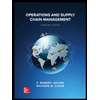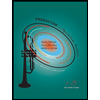A production manager is concerned about the low output levels of his employees. The articles that he has read on job performance frequently mention four variables as being important to job performance: (1) skills required for the job, (2) rewards, (3) motivation, and (4) satisfaction. In several of the articles it was also indicated that only if the rewards were (attractive) to the recipients did motivation, satisfaction, and job performance increase, not otherwise. Given this situation: 1. Define the problem. 2. Create a diagram. 3. Develop at least six hypotheses. Part 4:Ohap
A production manager is concerned about the low output levels of his employees. The articles that he has read on job performance frequently mention four variables as being important to job performance: (1) skills required for the job, (2) rewards, (3) motivation, and (4) satisfaction. In several of the articles it was also indicated that only if the rewards were (attractive) to the recipients did motivation, satisfaction, and job performance increase, not otherwise. Given this situation: 1. Define the problem. 2. Create a diagram. 3. Develop at least six hypotheses. Part 4:Ohap
Practical Management Science
6th Edition
ISBN:9781337406659
Author:WINSTON, Wayne L.
Publisher:WINSTON, Wayne L.
Chapter2: Introduction To Spreadsheet Modeling
Section: Chapter Questions
Problem 20P: Julie James is opening a lemonade stand. She believes the fixed cost per week of running the stand...
Related questions
Question
Please help i need the solution

Transcribed Image Text:A production manager is concerned about the low output levels of his employees. The articles that he
has read on job performance frequently mention four variables as being important to job performance:
(1) skills required for the job, (2) rewards, (3) motivation, and (4) satisfaction. In several of the articles it
was also indicated that only if the rewards were (attractive) to the recipients did motivation, satisfaction,
and job performance increase, not otherwise. Given this situation:
1. Define the problem.
2. Create a diagram.
3. Develop at least six hypotheses.
Part 4: Chapt
Expert Solution
This question has been solved!
Explore an expertly crafted, step-by-step solution for a thorough understanding of key concepts.
This is a popular solution!
Trending now
This is a popular solution!
Step by step
Solved in 3 steps with 1 images

Recommended textbooks for you

Practical Management Science
Operations Management
ISBN:
9781337406659
Author:
WINSTON, Wayne L.
Publisher:
Cengage,

Operations Management
Operations Management
ISBN:
9781259667473
Author:
William J Stevenson
Publisher:
McGraw-Hill Education

Operations and Supply Chain Management (Mcgraw-hi…
Operations Management
ISBN:
9781259666100
Author:
F. Robert Jacobs, Richard B Chase
Publisher:
McGraw-Hill Education

Practical Management Science
Operations Management
ISBN:
9781337406659
Author:
WINSTON, Wayne L.
Publisher:
Cengage,

Operations Management
Operations Management
ISBN:
9781259667473
Author:
William J Stevenson
Publisher:
McGraw-Hill Education

Operations and Supply Chain Management (Mcgraw-hi…
Operations Management
ISBN:
9781259666100
Author:
F. Robert Jacobs, Richard B Chase
Publisher:
McGraw-Hill Education


Purchasing and Supply Chain Management
Operations Management
ISBN:
9781285869681
Author:
Robert M. Monczka, Robert B. Handfield, Larry C. Giunipero, James L. Patterson
Publisher:
Cengage Learning

Production and Operations Analysis, Seventh Editi…
Operations Management
ISBN:
9781478623069
Author:
Steven Nahmias, Tava Lennon Olsen
Publisher:
Waveland Press, Inc.